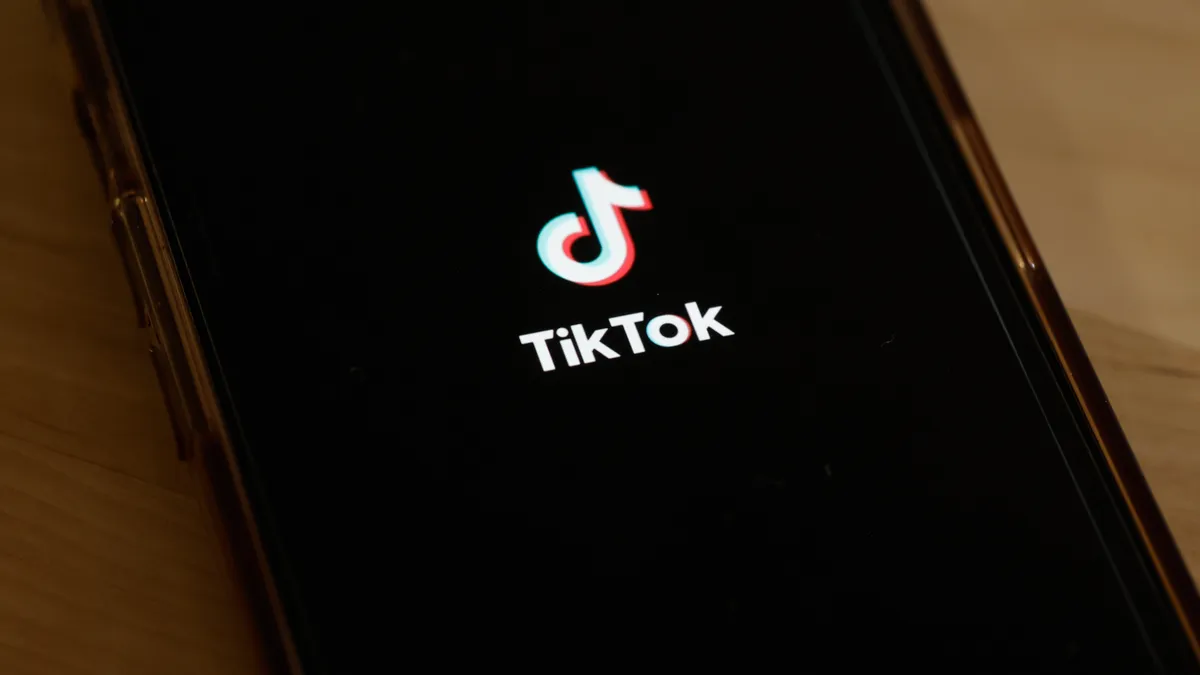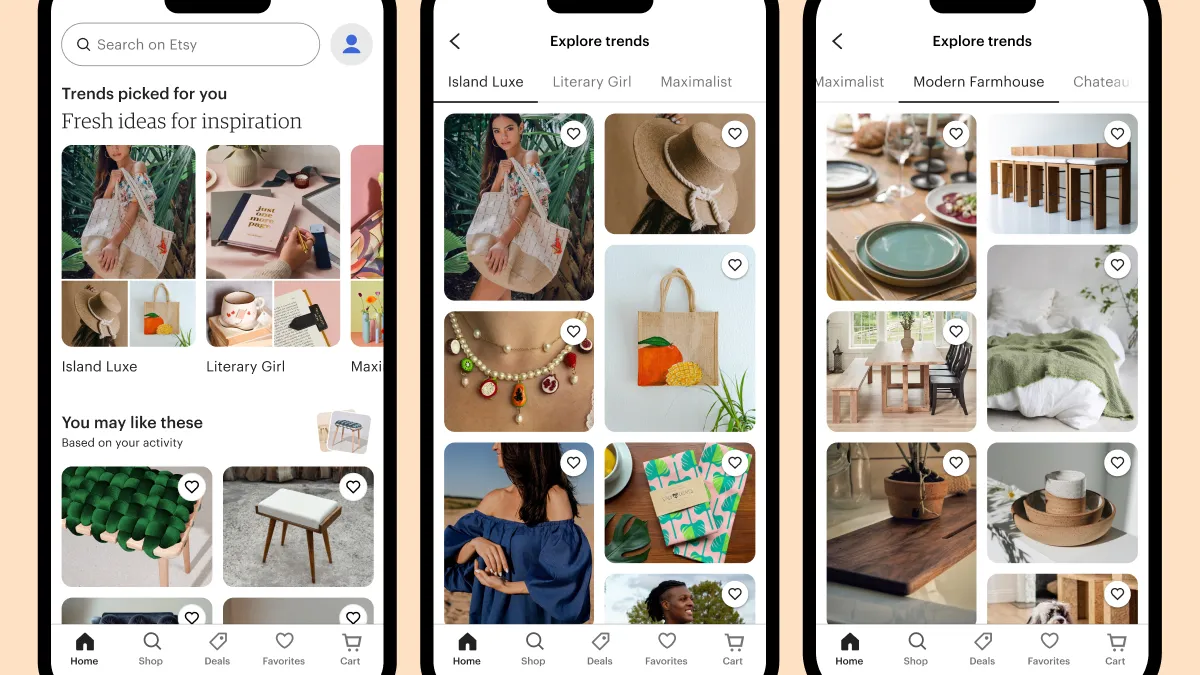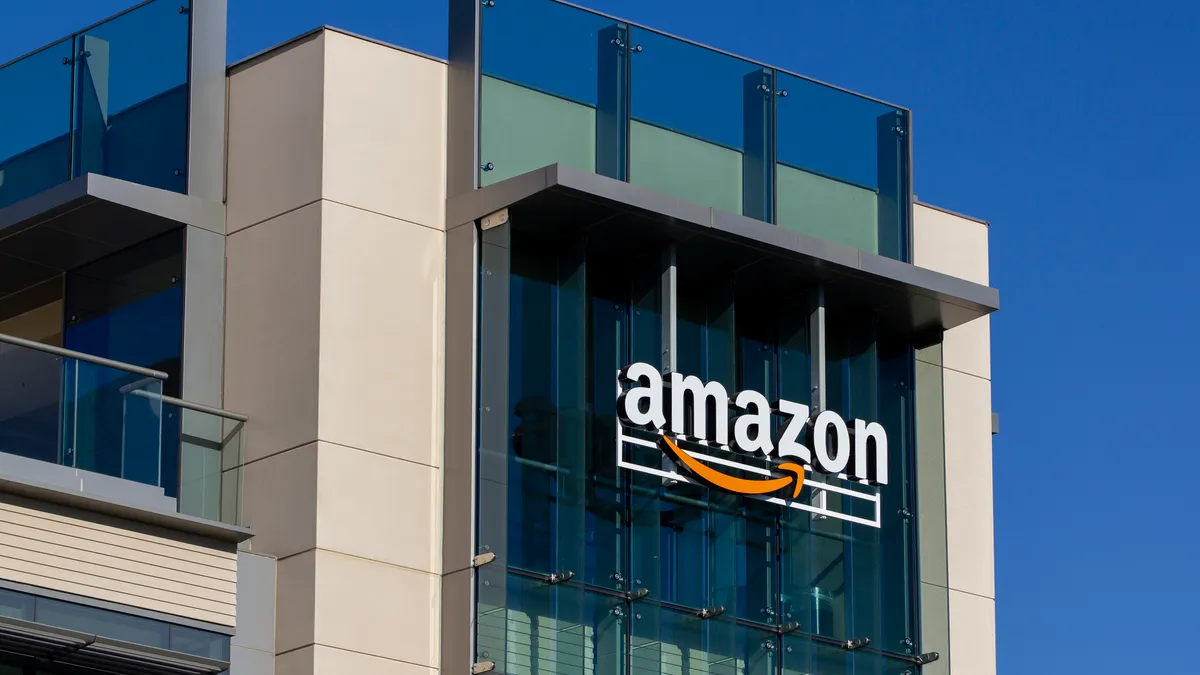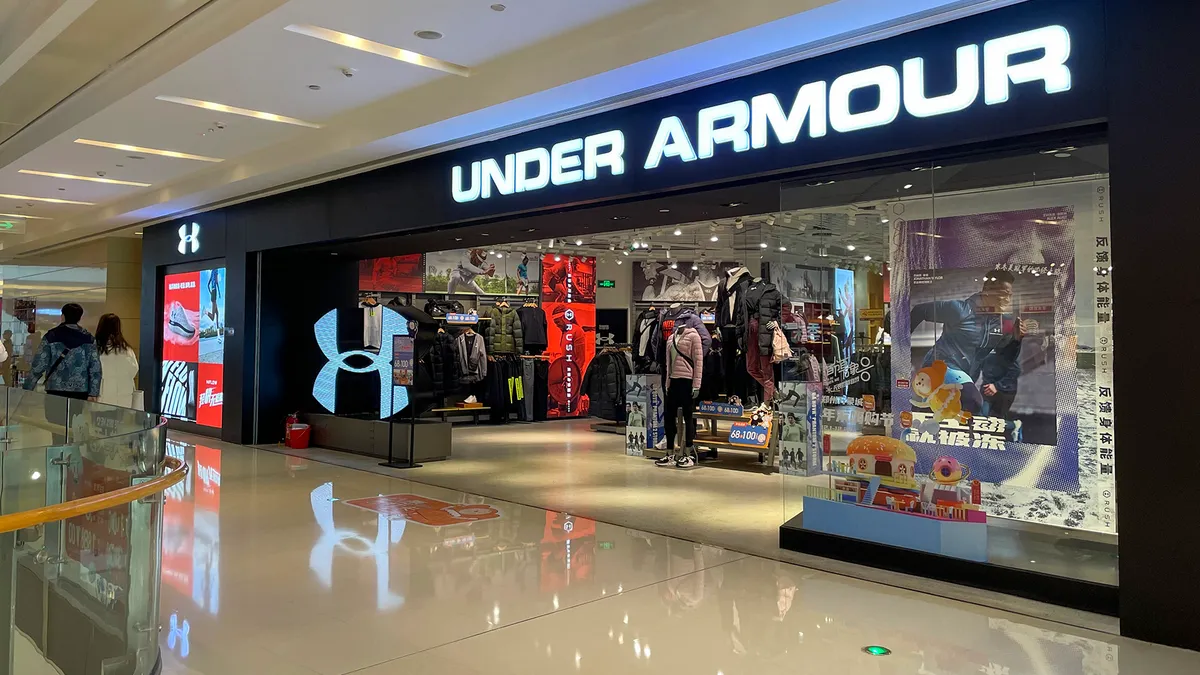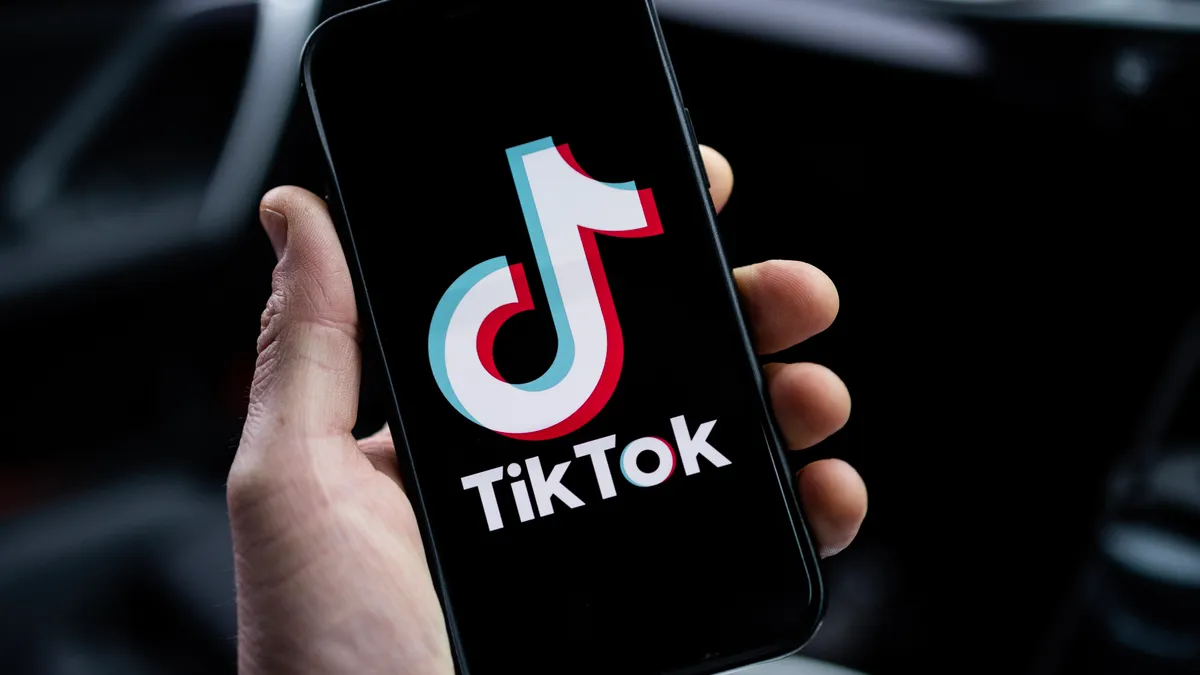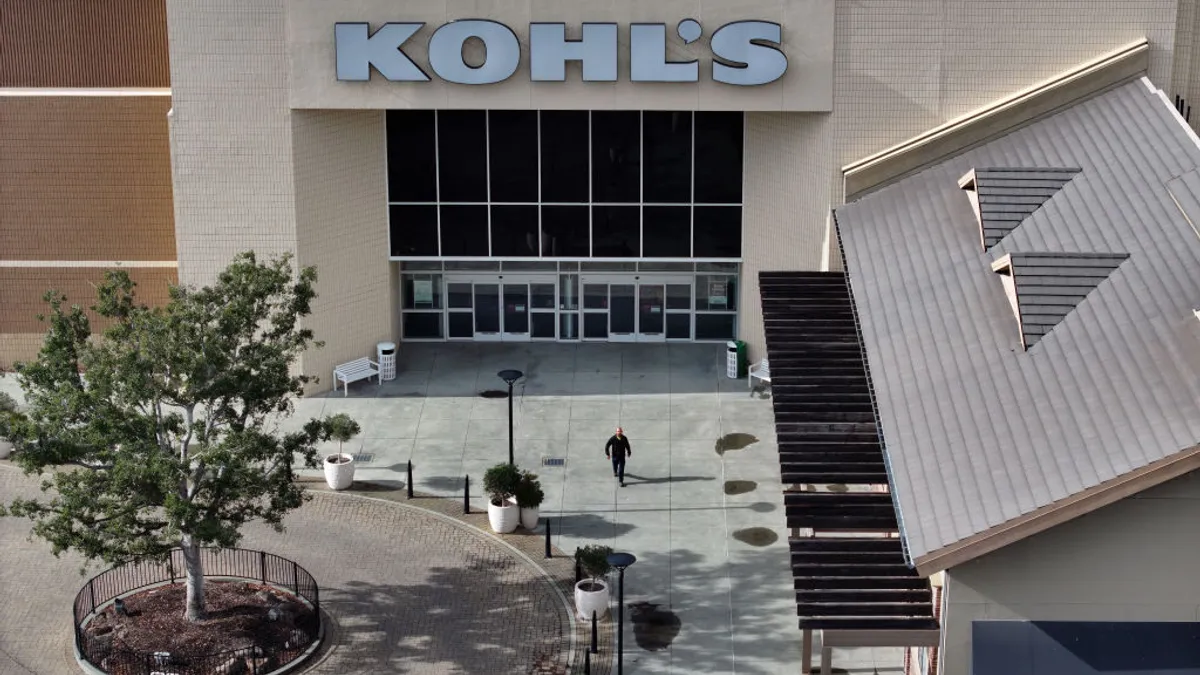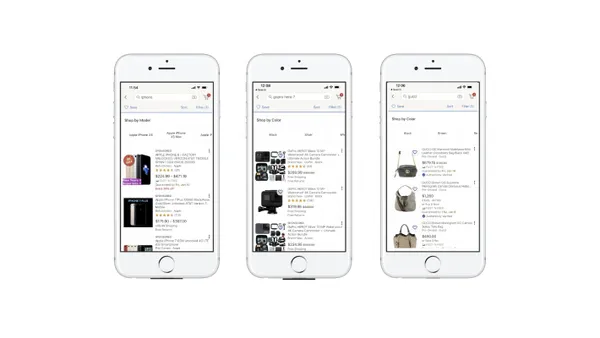Retail technology is a long game and advancing innovations can be on the rise for a very long time. Look no further than Retail Dive's list — published two years ago this month — of the top five technologies we expected to reshape retail in 2017: Robotics; drone delivery; e-commerce anti-fraud tools; blockchain and bitcoin; and virtual/digital assistants. Many of those technologies have yet to see wide adoption.
Robotics, for example, was one of the hottest technology topics in retail that year, as several retailers expanded their use in their supply chains. But, two years later retailer the use of robots can't be described as widespread, and is still evolving toward use in-store and for last-mile delivery.
Meanwhile, the excitement over drone delivery entering 2017 fizzled out amid regulatory delays, but that doesn't mean the industry has heard the last of this technology. As for blockchain and bitcoin, a few retailers are experimenting with them, but most are still trying to understand what they are. Meanwhile, e-commerce anti-fraud tools and virtual/digital assistants have become real growth segments.
With that in mind, many of the hottest retail technologies heading into 2019 are iterations of earlier technology that may finally be at an adoption tipping point this year. These are areas of technology development the sector has been hearing about for a while, but are expected to be the focus of new energy and innovation in the coming months.
Customization enabled by tech
Is customization just another name for personalization, a notion that has dominated retailers' shopping experience strategies in recent years?
It might be most accurate to describe it as the intersection where different forms of on-demand manufacturing technology meet the need for more personalized shopping experiences, as well as the evolving expectation among customers that they should have more control over product selection. In short, it's about giving the customer exactly what they want.
Retailers like Eloquii have been heading in that direction for a while, and brands such as Adidas have experimented with on-demand, 3D-printed apparel. But Amazon's recent acquisition of body-scanning firm Body Labs and new funding for scanning technology developers like Naked labs stoked new excitement in the concept. Furthermore, companies such as OnPoint Manufacturing can now enable the production process allowing shoppers to obtain apparel in fits and size combinations that even wider rack selections don't provide.
Kirby Best, chairman of OnPoint Manufacturing told Retail Dive, "Getting the right fit isn't a size issue; it's an inventory issue." With that in mind, OnPoint created an Alabama factory that manufactures apparel based on unique size patterns and combinations of sizes (for example, a dress that's a size 8 on top and a size 6 on the bottom). "Someone can order exactly what they want, and we can make it for them," Best said.
He added that OnPoint is closely studying the rapidly evolving area of body-scanning technology, noting that these capabilities are becoming available in smaller formats and virtual offerings that will make them more broadly available and useful.
OnPoint eventually plans to open on-demand factories in multiple markets, but it's not the only one investing in customization. Arts and crafts retailer Joann has embraced the concept, recently launching a MyFabric offering that allows shoppers to customize fabrics and have them printed with the help of WeaveUp's digital textile technology. Joann also invested in Glowforge, a 3-D laser-cutting startup.
A Joann spokesperson told Retail Dive via email, "All of our customers are unique, and we want to enable them with tools and technologies that allow them to fully customize their items in any way they choose."
BOPIS moves beyond mass market
Buy online, pick up in-store (BOPIS) is a good example of an area of innovation that is not new to retail, but could be set for a mass-market breakout in 2019. Several large retailers adopted BOPIS early on, and have continued to refine their approaches and develop new ideas for how stores should be designed and store operation transformed around the concept. Walmart, for example, has placed pick-up towers in stores and explored how BOPIS can be enhanced when paired with other technology innovations, like driverless vehicles that could bring customers to stores for order pick-up.
More recently, merchants, as varied as apparel retailer rue21 and pet products maven Petco, have adopted BOPIS, and by the end of 2018, it was becoming clear that retailer devotion to BOPIS paid off with increasing interest among customers. A GPShopper report last year suggested that more than two-thirds of more than 1,300 shoppers surveyed said they planned to use BOPIS services for holiday shopping needs.
That is likely to influence greater adoption and leveraging of the enabling technologies that support BOPIS this year. These include platforms, devices and mobile architectures linked with inventory and supply chain data that allow store websites and in-store associates to coordinate online orders, in-store available stock and shipping between stores. Ultimately, BOPIS and the technologies that enable it offer the most obvious proof points that retailers' omnichannel visions finally are becoming reality.
Still, retailers need to be step-wise in their BOPIS rollouts. If they rush to market with BOPIS without adequately supporting it, it could end up being a sales killer. Danielle Roberts, senior product manager at Kibo, which provided technology for rue21's launch, told Retail Dive, "BOPIS is not something everyone can just jump into immediately. In most cases, consumers will only give a retailer one chance to get it right, which means the inventory better be ready when that confirmation email says it is."
She further added, "Consumers operate in multiple mediums. For them it's not about loyalty to a device type or a physical store. It's about convenience, cost and quality. In consumers' minds, online and offline are already linked."
Search options expand
Shopping search increasingly means visual or voice search, very likely through a mobile smartphone or another device that is not a desktop computer.
Visual search, in particular, is becoming a more frequent component of mobile app experiences, in everything from the apps of social networks like Pinterest, Snapchat and Instagram that adopted the technology early on to those of retailers. When used via mobile, it can be an omnichannel enabler, assisting consumers in app-based purchasing and driving social commerce, but also bringing them into stores — especially when searching for an image of a specific item shows which nearby stores might have that product.
Casey Gannon, vice president of marketing at Shopgate, told Retail Dive by email, "When it comes to apparel, home improvement, furniture or any number of other industries whose product relies so heavily on being visually unique and appealing, visual search is going to grow more and more important to reduce the path to purchase and navigate consumers to the products they want sooner. Although innovative now, it will soon be table stakes."
In the second half of 2018, there was a flurry of announcements about retailers adopting or developing visual search technology. Luxury e-commerce marketplace Farfetch used Syte to enable visual search capabilities for its iOS app, which followed by a few months similar moves by Forever 21 and H&M. Walmart's Hayneedle has been working with Slyce, though at the end of 2018, Walmart reportedly was working on developing its own visual search technology.
Thanks to devices like the Amazon Echo and Google Home, voice search also is on the rise, with Capgemini predicting that within three years, 40% of consumers could use voice search instead of text search via smartphones or websites.
Expanding the reach of voice assistants into smartphones and other devices, which Google has easily managed by embedding Google Assistant in Android devices, and which Amazon is working on as well, will further power growth in voice search. However, Mike Mallazzo, director of marketing at Narrativ, which uses machine learning to improve search, told Retail Dive that voice search for shopping still offers a limited perspective.
"Voice search right now worries me because in most cases it doesn't show you the full range of results you get from other forms," he said. "It may tell you about just the products from the company [like Amazon] the enables that search, and not the full range of content you get from other search results."
Narrativ's take is that the real innovation happening in search is taking place in the underlying data. Mallazzo said machine learning and structured data can deliver better search results, and assurance the product links embedded in a range of content throughout the web are valid and up-to-date.
Augmented reality and virtual reality find homes in narrow spaces
Retailers may be tired of hearing what these technologies potentially can do for them, as it's a sales pitch they have been hearing for years.
In late 2017 and early 2018, an initial round of AR features in mobile apps targeted buyers of furniture and home decor, giving them a way to visualize those items in their own home environments. But, there are signs that AR and VR will be leveraged in stores and could figure prominently in omnichannel shopping and store operations.
Most recently, Walmart Labs developed an AR-based product comparison scanner for its mobile app that can be used in-store to scan entire shelf sections to compare product details, rather than using a barcode scanner to look up products one at a time. This and other types of retail AR app features could leverage visual search to become more useful and valuable to shoppers and retailers.
On the virtual reality front, Macy's this month is due to expand use of Marxent's VR technology to 90 of its stores. The retailer provides shoppers with a VR headset to help them design their own room settings by visualizing and moving around 3D images of different furniture items. Early on, it saw a 60% increase in sales when customers used the technology, as well as a decline in returns, all of which convinced Macy's to buy into VR to a greater extent.
Meanwhile, Walgreens, Home Depot and Walmart, among others, also have started working with InContext Solutions to use VR technology to help them with planning store designs and merchandise placement.
A CB Insights report on retail trends for 2019 observed that AR and VR are still "transitory" technologies, meaning they are starting to see some adoption, but still need to be better understood. "While augmented and virtual reality offer a myriad of benefits to retailers, high upfront costs remain a barrier to adoption," the report stated. "Retailers will have to continue to experiment with how to best leverage the technologies to reap a return on their investment."
Automated checkout/Cashierless stores
The sector has heard a lot about Amazon Go and its cashierless convenience stores, but what about other technology companies enabling automated checkout, as well as other forms of expedited self-checkout and mobile checkout?
This year is likely to witness much more movement on smart/automated/cashierless checkout schemes. Amazon may be poised for a more rapid expansion of Amazon Go if reports are correct that it's seeking airport space and mulling a plan to open 3,000 stores by 2021. But other technology companies, like Standard Cognition, are saying deployment of their solutions by other retailers will begin to ramp up this year.
Evan Shiue, head of strategy at Standard Cognition, told Retail Dive via email that its automated checkout platform will be in "thousands of stores" by the end of this year. "Our early customers span the pharmacy, convenience and grocery segments."
While not all sizes and types of retailers have been considered viable candidates for automated checkout, Standard recently acquired a mapping software start-up, Explorer.ai, whose technology could open up the addressable market.
"Mapping is a continuous process, as we always need to be tracking who has what. If we can't do it quickly – the whole store in minutes — we don't have an accurate picture," Shiue said. "This is a challenge that all autonomous checkout companies, including Amazon Go, have faced. Whoever solves it first has the best shot at working with large-format retailers."
That doesn't mean such retailers will do away with cashiers and other forms of payment, as Amazon is doing with Amazon Go. "We think cash and credit payments will still play a role in these stores, so we're providing payment kiosks," Shiue said. "So far, every retailer has told us they don't want to be app only — they also need to accept cash and credit."
Correction: An earlier version of this article included an inaccurate quote, it has been removed. Retail Dive regrets the error.









